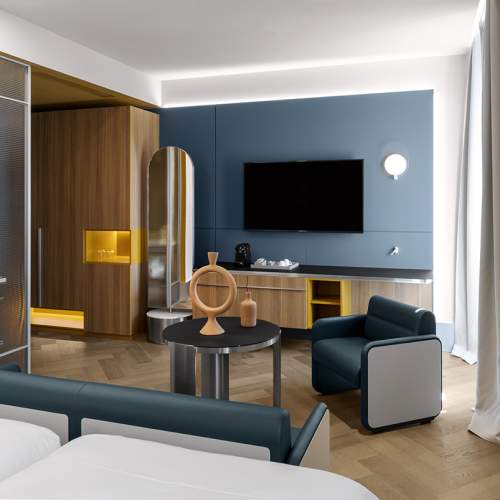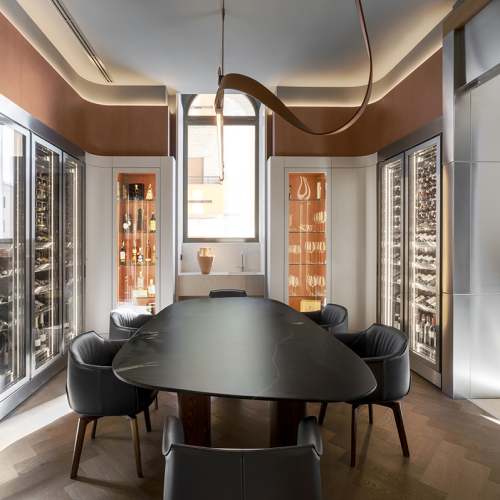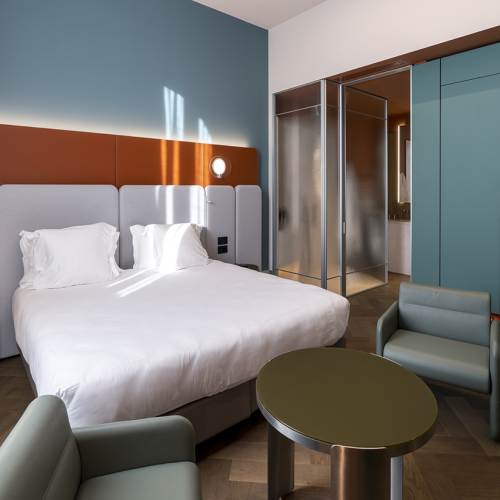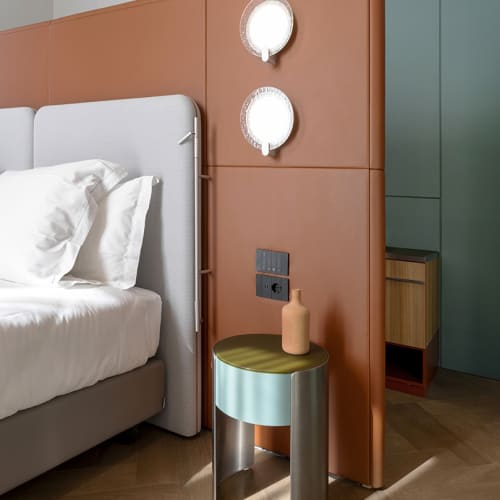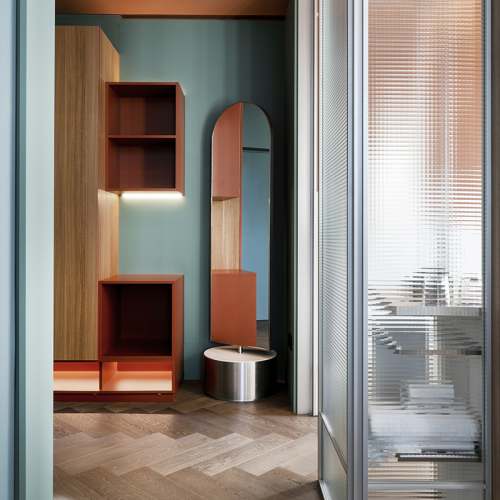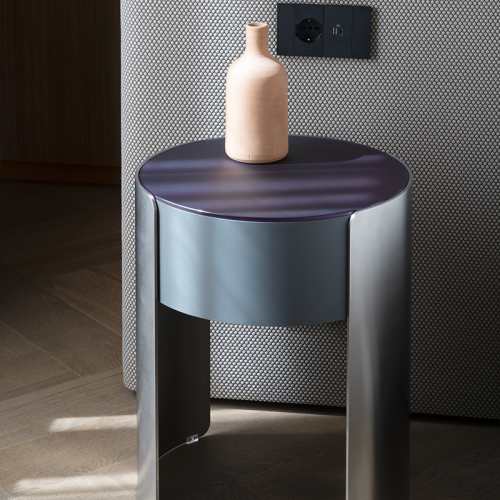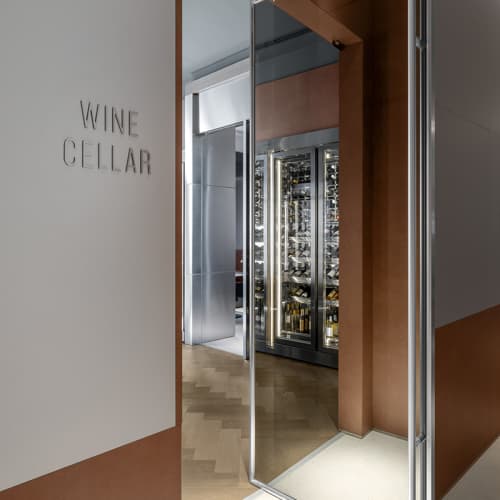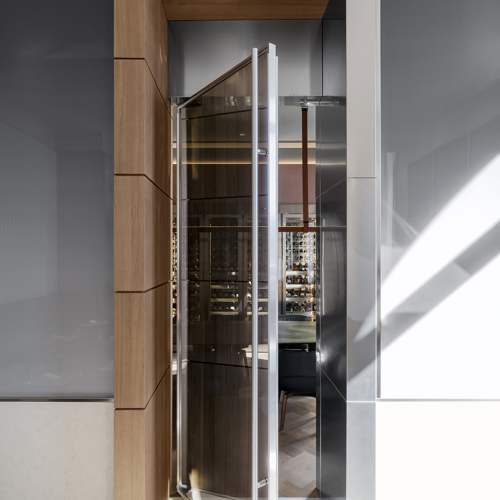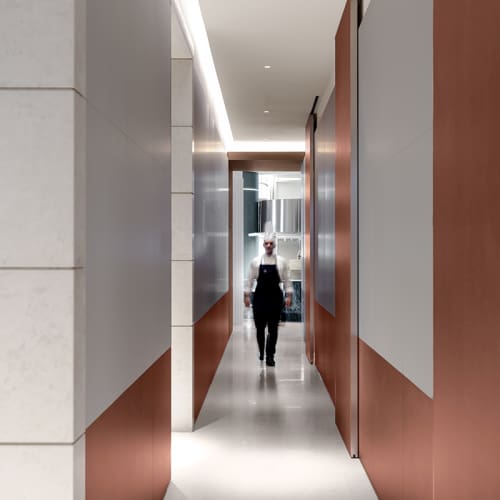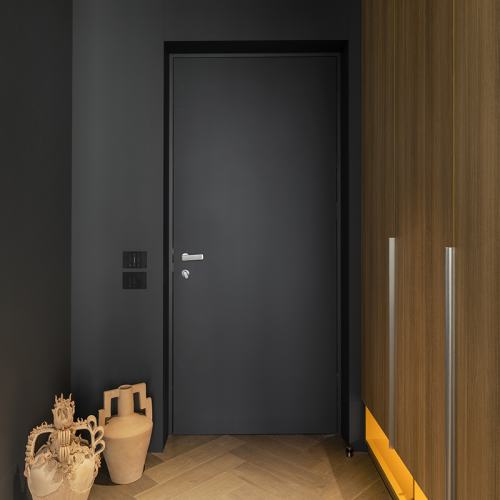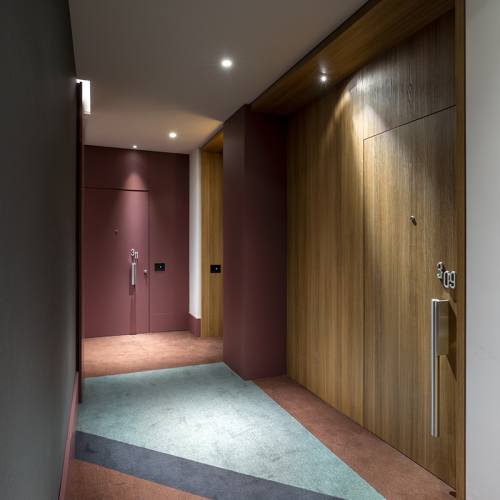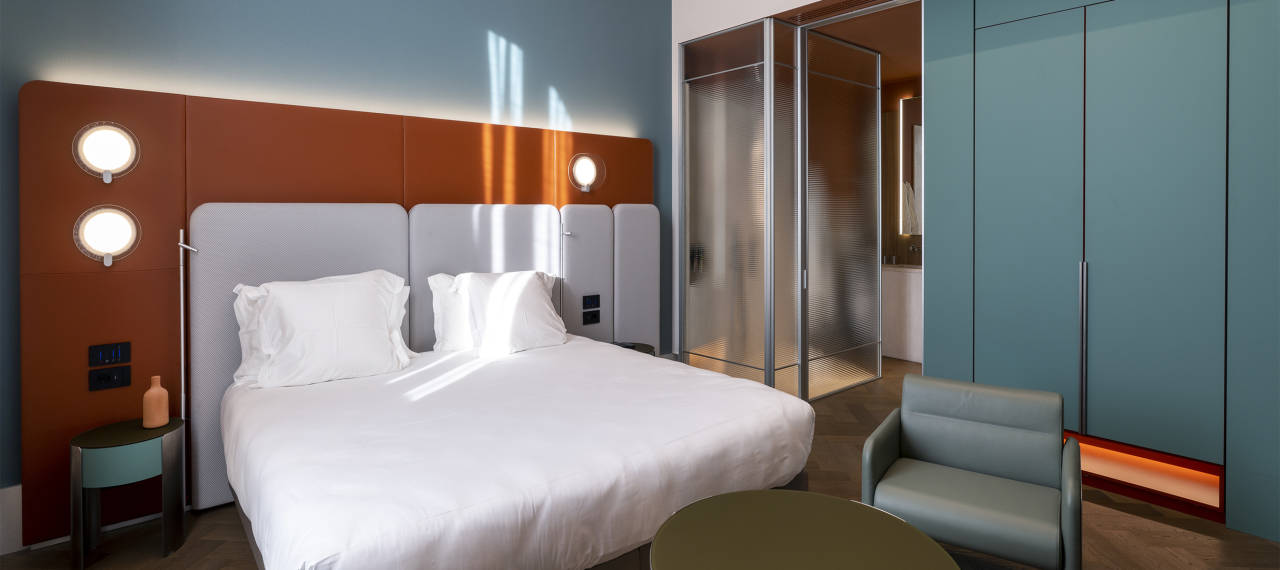
PALAZZO TIRSO by Studio Marco Piva
The Palazzo Tirso MGallery in Southern-Italy Island of Sardinia was entrusted to Armando Bruno and Ferdinando Tedesco of Studio Marco Piva for a meticulous redevelopment project which involved overhauling both the architecture and the interior design. The Milan-based design firm worked tirelessly to preserve the historical identity of the 1920s building, transforming it into a five-star hotel brimming with visual and tactile experiences that are evocative of nature, blending a timeless elegance with innovative solutions.

Ferdinando Tedesco, Chief of Interior Design, tells us about how the Studio used carefully chosen materials and colours inspired by the vitality of the area to create a harmonious exchange between a sense of continuity and unexpected ‘cracks’ in its renovation of the building. FENIX materials –FENIX NTM® Bloom range in particular - are incorporated into the design, serving not only to intensify the pleasure of discovering multiple levels of perception in the interiors, but also to support the hotel’s pursuit of its sustainability goals.
- How did you picture the transformation of Palazzo Tirso when you were assigned with this important redevelopment project?
Palazzo Tirso gave us an opportunity to experimentate the repurposing an urban building, and so we immediately imagined it as a new place for the city to socialise that could make a prestigious addition to Cagliari’s social scene.
The building is located in Piazza Deffenu, right in the heart of town and just a stone’s throw from some of the city’s most important shops and restaurants. When designing it, our priority was to respect the spirit of the area, drawing inspiration from its distinctive places, colours and light. The result is a blend of contemporary hospitality with local characteristics: a hotel in the city, for the city. That concept was the driving force behind the project.
- There is a dialogue between continuity and asymmetry within the hotel, making for a varied and surprising aesthetics. From preserving the building’s 1920s architectural charm to experimenting with an innovative design, how do the two worlds coexist harmoniously?
The two worlds coexist by striking a balance that enriches the aesthetics of contrasts. The asymmetry, which comes through in some of the contemporary design interventions, does not dominate the original 1920s elements, but rather complements and echoes them, creating a fresh sense of vitality and dynamism in the dialogue between present and past.
For example, in the hallways of the guest rooms, on one side there are recessed doors with wooden frames, whilst on the other side they are flush to the wall and made with FENIX, experiencing a much more contemporary material. A certain continuity in the architectural language creates harmony but also, at the same time, proves to be surprisingly impactful.
- The tactility and colour experience standout in the alternation of styles. What choices did you make when seeking to enhance the furnishings on these levels?
We wanted to make the guest experience as immersive as possible by engaging the senses, especially touch and sight.
The hotel’s colours and textures merge with the historic architecture and natural beauty that can be admired from every window. The shades of the leathers used for the furnishings are redolent of the wild, unspoilt nature that covers the island, creating a contrast with the intense blue of the sky and the warm, golden hues of the sand.
We used FENIX in a way that is in keeping with the narrative of the place. Despite maintaining an extremely contemporary and innovative spirit, especially in the use of lignin-based Bloom technology, it provides that velvety feeling that evokes a very human dimension and offers a nod to this revival of the past. With the tactile and chromatic experience it brings to the table, it helps to make the project much warmer and closer to a homely dimension.
- What kind of FENIX applications can be found throughout the hotel?
We have mainly used FENIX in the definition of wall coverings. Starting from the doors in the hallway, guests are led into the rooms by FENIX, which is used for wardrobes and as a backdrop for the TV units, like a tunnel transporting you into a different dimension.
To offer a more tactile experience, we also integrated FENIX into the sides of the leather armchairs in the guest rooms. In this case, the surface adds a pleasant sense of ‘vibration’ when touched. We opted for Argento Dukat, as the matte metal surface gives it a distinctive material effect, as well as protecting the chair from any knocks or bumps. As such, the use of FENIX is not merely an aesthetic choice, but also a functional one, insofar as it protects the object.
- Speaking of a sense of protection, what role does nature and its preservation play in the restoration project? How does the selection of materials help to make the hotel more sustainable?
Giving a building a new lease of life by adopting innovative solutions to improve its performance: that’s our sustainability goal in a nutshell. Both environmental and social sustainability. After all, integrating the genius loci into architectural reclamation projects can help to preserve the local culture, biodiversity and traditions, all whilst promoting the responsible use of natural resources.
The use of predominantly Sardinian materials, such as Biancone di Orosei marble, highlighted the decision to opt for zero-kilometre resources, thus helping to not only reduce the impact of transporting materials, while also supporting the local economy. What’s more, the use of durable, highly resistant materials such as FENIX shows a long-term approach to sustainability.
Sardinia’s connection with nature is also echoed on the rooftop, where a botanical garden inspired by typical local flora provides a unique view of the city. ‘Nature’, in the sense of design ethics, should be the protagonist of any type of project.

Studio Marco Piva
Milan-based Studio Marco Piva embraces design on all different scales, from master planning to architecture, interior design to industrial design.
Tireless research into the formal and functional characteristics of spaces, technologies and materials, developed with a particular focus on the environment, are the firm’s fundamental elements. on the studio numerous projects include Next 21 in Osaka, Oceana and Tiara in Dubai, Port Palace in Monte Carlo, Hotel Mirage in Kazan and Excelsior Hotel Gallia in Milan, which garnered multiple international awards.
Some more recent developments are the Radisson Collection Hotel, Palazzo Touring Club and Santa Sofia in Milan, Palazzo Nani in Venice, urban master plans in China, the Tonino Lamborghini Towers in Chengdu, reclamations of historical buildings such as Palazzo Tirso in Cagliari and Palazzo Cordusio in Milan, and designing products for several major Italian companies.
